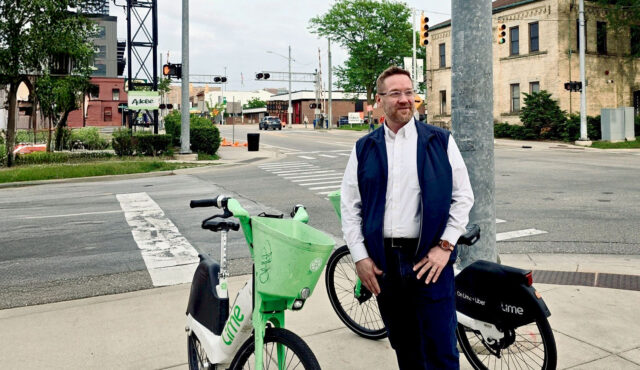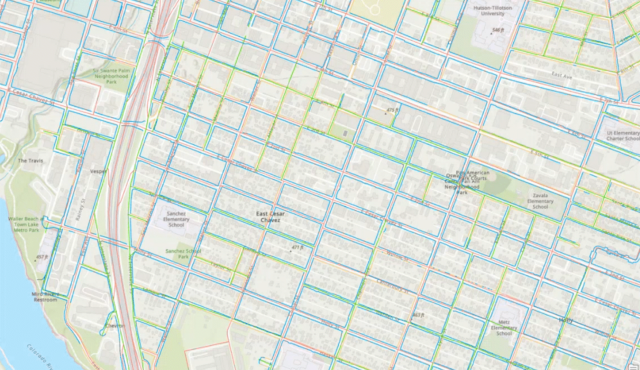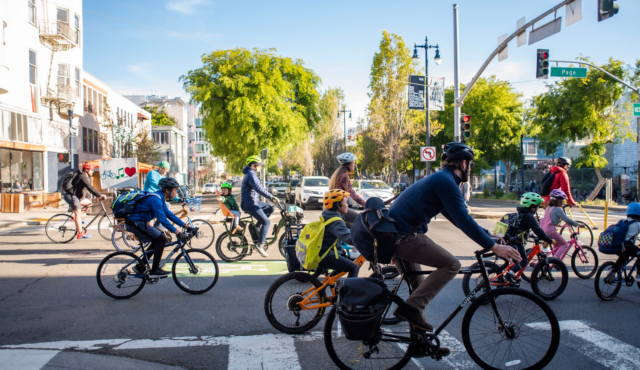As transportation planning and design approaches have evolved in recent decades to focus more on walking, biking, and rolling, the All Ages and Abilities (AAA) framework has become the standard approach. As the name suggests, the AAA approach prioritizes providing active transportation options that serve people of all ages and abilities: that means people young, old, and in between, as well as people with disabilities and people with varying levels of comfort or confidence getting around by bicycle or other active modes.
While the AAA approach was a welcome and necessary shift for the industry, it does not inherently account for the various ways that peoples’ experiences can differ based on their identity. Over the past several years, Toole Design staff have been developing and applying an expanded version of AAA: the All Ages, Abilities, and Identities framework.
Why Add Identity to the Equation
By incorporating identity, we can more fully recognize the many factors that may shape a person’s experience using active transportation. Factors such as gender, race, skin tone, body size, and visible cultural indicators can play a large role in how safe and welcome (or not) a person feels using active or shared modes of transportation. For example:
- Studies have shown that Black people are more likely to be stopped by police while riding a bike — and that drivers are less likely to yield to people with darker skin tones.
- People who are gender non-conforming have reported feeling unsafe riding (or waiting for) public transit, especially at night.
- Parents and caregivers need to transport other people (and often lots of stuff), which can be challenging on foot or bike.
- Walking or biking can be viewed differently depending on one’s cultural background, so people in some communities may be uncomfortable or transgressive defying their cultural norms.
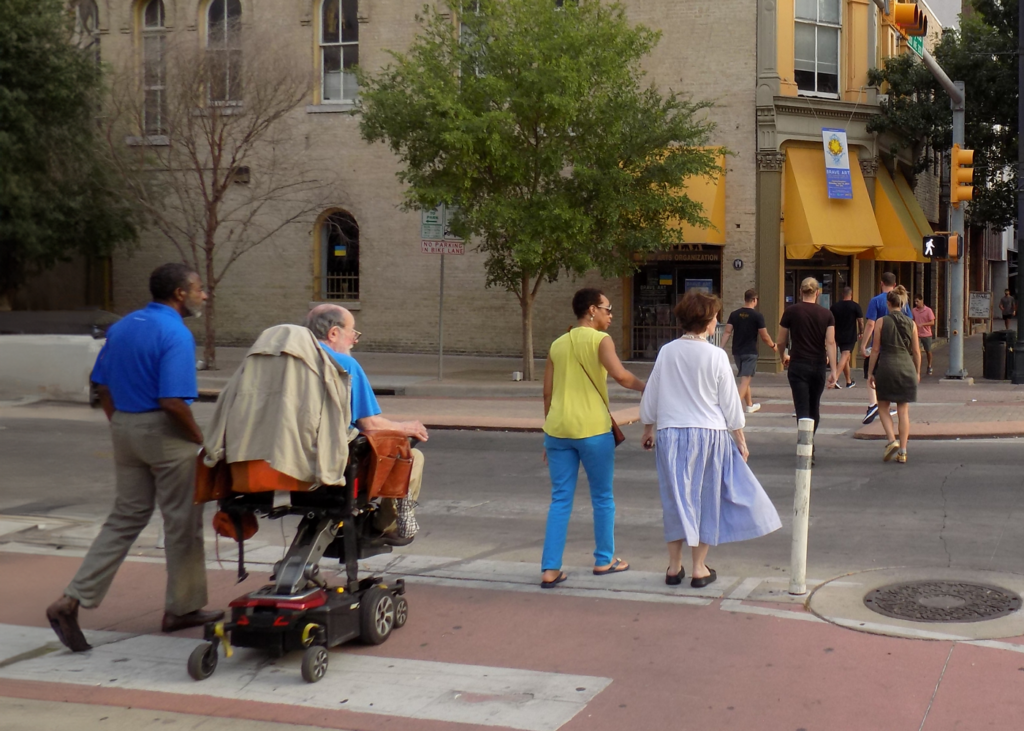
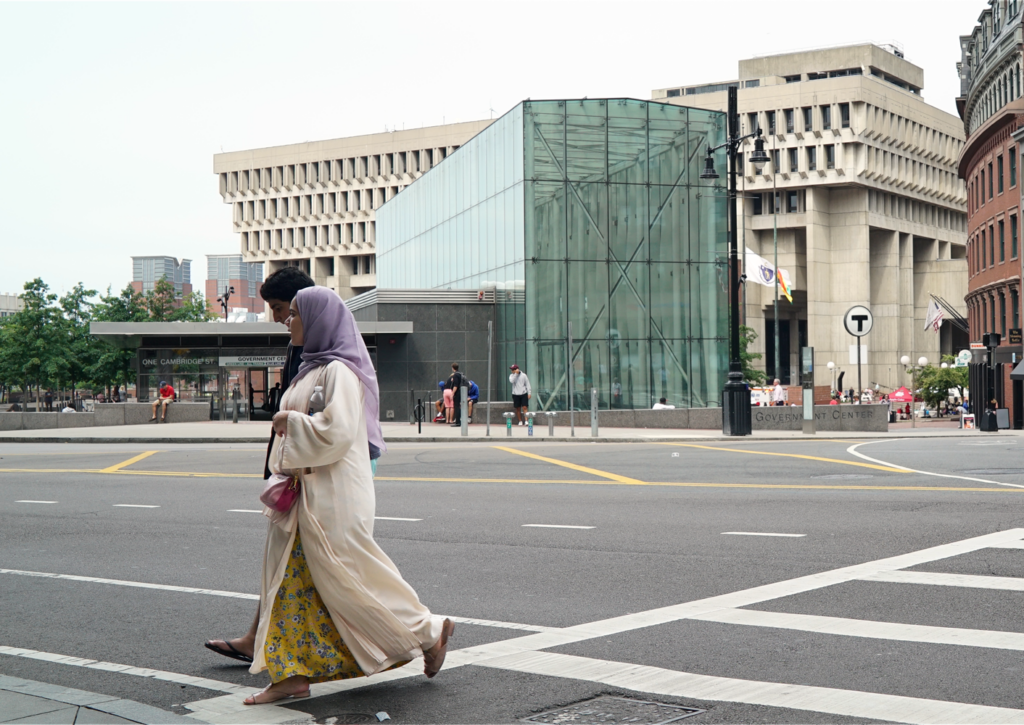
Identity factors can shape a person’s experience using active transportation.
The list goes on. And, of course, many people have not just one identity factor that impacts their travel decisions but multiple factors that intersect. For instance, transportation challenges are compounded for a person who is gender non-conforming AND has a disability that prevents them from driving. When we consider identity factors in addition to age and ability — and the ways they intersect with each other — we can create transportation networks that are not only complete but comfortable and accessible for more people.
Launching All Ages, Abilities, and Identities in Cambridge, Massachusetts
We first developed the All Ages, Abilities, and Identities framework with the City of Cambridge, Massachusetts, for the Cambridge Bicycle Plan Update in 2020. We are proud of our longstanding history supporting the City of Cambridge, which continues to implement one of North America’s most robust and complete bicycle networks. Their success has largely stemmed from their commitment to taking action on equity- and access-related goals for their community. So when we were asked to help the City develop the 2020 plan update, integrating equity and expanding access to biking were top of mind.
As the plan states in Chapter 1, the City hopes to achieve “a future in which one’s age, gender, race/ethnicity, physical ability, or any other identification does not predict (or limit) their quality of life, health outcomes, involvement in crashes, or mode of transportation.” To that end, we worked with City staff to pioneer the All Ages, Abilities, and Identities framework for active transportation. (Hear more about how Cambridge implemented this approach in this 2021 podcast featuring Transportation Program Manager Cara Seiderman.)
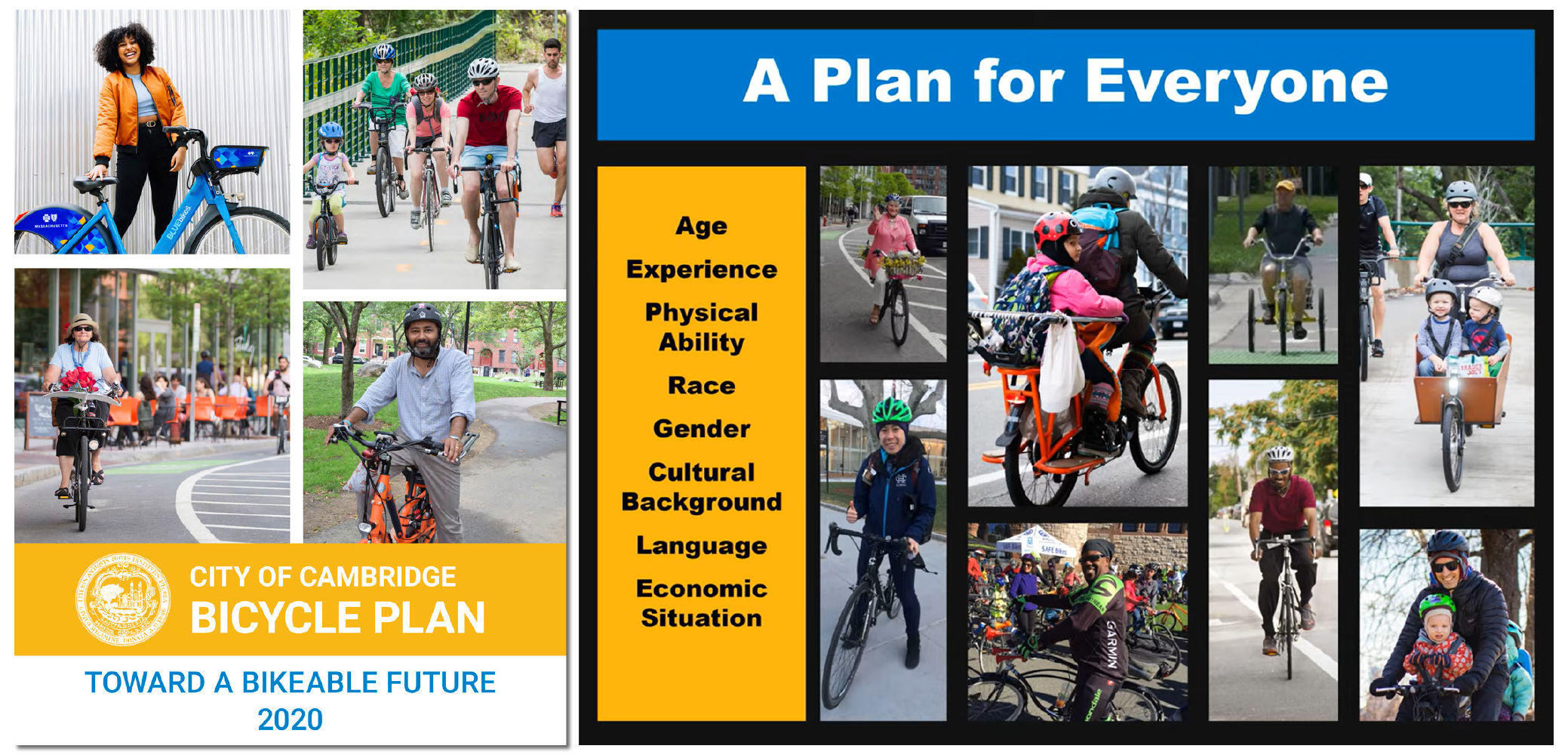
How to consider identity in all your Planning projects
By naming and centering identity, the All Ages, Abilities, and Identities (or AAA+) approach influences how we engage and with whom. It influences how we analyze data and look for disparities, the types of trips and destinations we consider when planning networks, the types of policies and programs we recommend, and the methodologies we create for prioritizing investments. In addition to impacting the tools and recommendations we provide, the AAA+ approach affects how we write our plans and the photos and graphics we use.

Since introducing the All Ages, Abilities, and Identities framework in the 2020 Cambridge Bike Plan, Toole Design teams have applied it in numerous communities, and it has become our default approach to active transportation planning. Here are some ways to apply the framework:
- Include the creation of an equity framework in project scopes: We frequently develop equity frameworks to guide project planning and implementation for clients. Check out a detailed equity framework in Appendix A of the Northwest Ohio Transportation Safety Action Plan.
- Prioritize engaging with diverse populations: The ATX Walk Bike Roll project included paid community engagement ambassadors and demographic engagement targets. When we set demographic targets for engagement projects, we check in on them regularly to catch any gaps and correct them. If we realize we are missing, say, an LGBTQ+ space from our engagement events, then we add one (or several).
- Use GIS-based equity analyses: We perform GIS-based equity analyses to identify disparities as well as opportunities to create or restore connectivity. As part of the San Francisco Biking and Rolling Plan, we analyzed the equity of bike network coverage, access, and safety.
- Seek ways to broaden your view: The tools and standards for active transportation planning are rapidly evolving — and so are tools and standards for understanding equity and access more broadly. We need to revisit and reassess our approaches constantly. For example, I recently wrote about how we are expanding our understanding of bike comfort.
- Partner regularly with Community-Based Organizations (CBOs): To reach diverse, local populations — particularly those who have been marginalized or who have unique experiences and risks related to active transportation — it’s important to partner with local CBOs that have existing relationships with these populations. For the LA County Bicycle Master Plan, we partnered with 13 CBOs to engage with diverse populations.
Not only are we excited to continue refining and expanding the AAA+ concept, we believe this needs to become the new industry standard. We look forward to the opportunities to partner with communities that are ready to take this next step.

